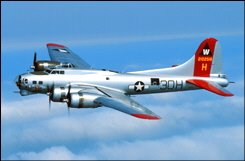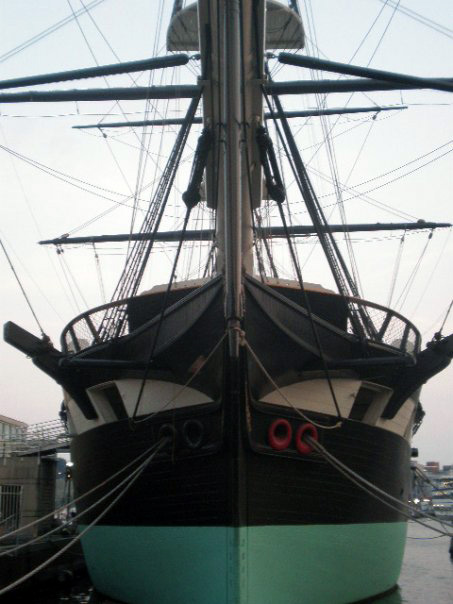


Ten years ago today I had the rare opportunity to fly left seat in a World War II-vintage B-17 bomber. The hour logged as Pilot in Command of a B-17 got a full page in my logbook, and so far I've resisted the temptation to pull out the page and have it framed.
The B-17 was a heavy, no nonsense freightcar of a ship. You turned the airplane using muscle, keeping the pressure on the control surfaces with your arms and legs, and waited for the wings and rudder to catch up. In other word, the B-17 had no power steering or hydraulic assist. Still the "Flying Fortress" was high tech hardware back in the late 1930s, and was used extensively for long-range daylight precision bombing missions deep inside Nazi Germany.
Flying at altitudes between 20,000 and 30,000 feet B-17 crews faced the terrifying prospects of death from flak barrages, swarming attacks from German fighters and immediate execution upon capture ... but more than one account I've read said sometimes the worst part of combat was surviving the cold. Even with layers of sheepskin clothing over an oygen mask and an electrically-heated flight suit, waist-gunners stood at open windows in the fuselage behind their .50 caliber machine guns, exposed not just to enemy bullets but also to the frigid blasts of air hurtling past the wings at 200 miles per hour.
If you got wounded, the first step toward survival meant staying alive during the 4-6 hour flight back to base, usually at -40 temperatures, with essentially zero medical assistance.
We'll never, thankfully, see another era where men exchange machine gun fire six miles above the earth with nothing ... not even a pane of glass ... below or between them but thin air.
It's worth remembering what these brave airmen faced, and endured, to preserve our freedom.
"12 O'Clock High" (1949)
http://imdb.com/title/tt0041996/
http://www.390th.org/aircraft/aircraft.htm
http://www.avsim.com/pages/0501/b-17_flight/b-17_feature.html


No comments:
Post a Comment